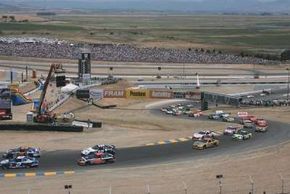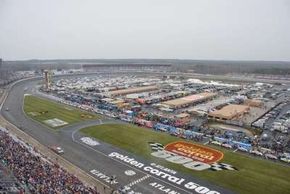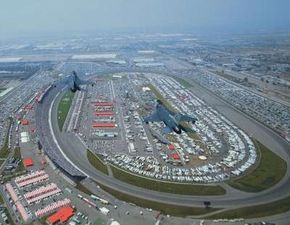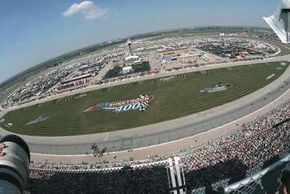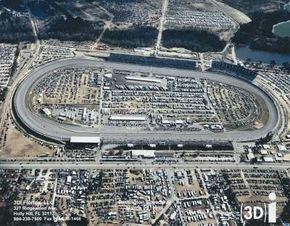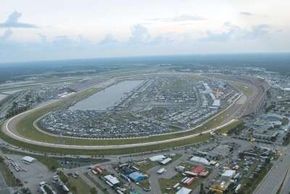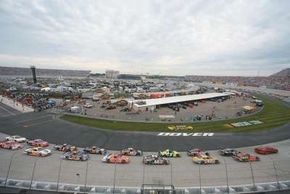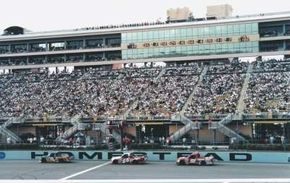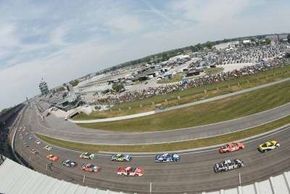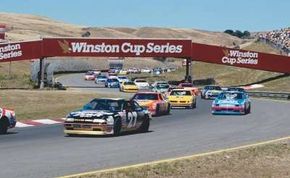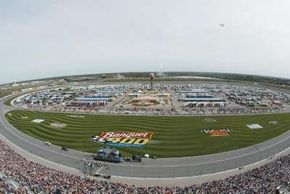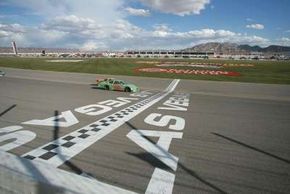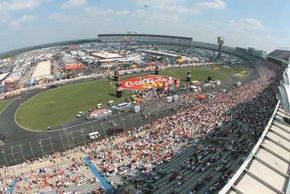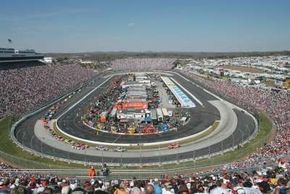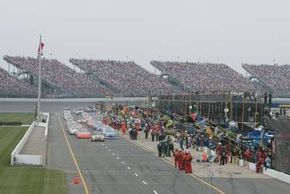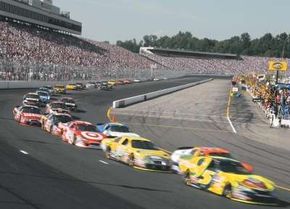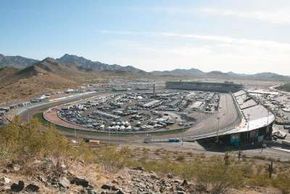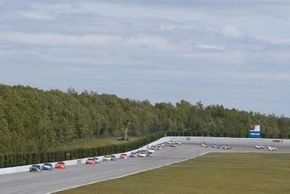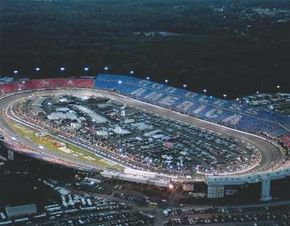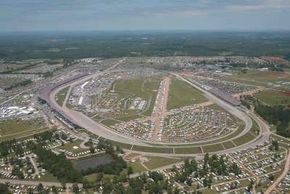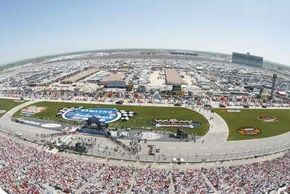Most of today's NASCAR NEXTEL Cup series races are held on high-speed oval tracks with banked turns; generally speaking, the greater the degree of banking in the turns, the faster the cars can go through them. Ovals of more than one mile in length are considered superspeedways, because the longer straightaways allow the cars to reach higher speeds. Only three of the current oval tracks are less than one mile in length.
Advertisement
The majority of ovals have a curved frontstretch, and these are known as "tri-ovals" or "D-shaped tracks." Those with four distinct turns (such as the Indianapolis Motor Speedway) are sometimes referred to as "quad ovals." All the oval-track races are run counterclockwise, meaning they have only left-hand turns. Only two races are held on road courses, which feature numerous left- and right-hand corners with little or no banking.
Today's tracks are all paved, but it wasn't always that way. In fact, in NASCAR stock car racing's inaugural 1949 season (when it was called NASCAR Strictly Stock division), all the tracks were dirt except for the 4.15-mile Daytona Beach & Road Course, only part of which was paved.
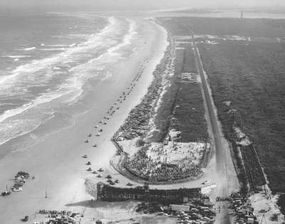
Racing on dirt is far different than racing on pavement. On dirt, cars are often slid sideways around turns in a two- or four-wheel "drift," which makes them more difficult to control and can throw up a lot of dust. Following drivers may find it difficult to see where they're going, and this -- combined with the fact they're drifting their cars as well -- adds to the danger of dirt-track racing. Making it worse is that ruts can form in the corners, which can flip a car over if it hits them at a bad angle. Particularly treacherous was the circular Langhorne Speedway, where racers essentially drove the whole distance in a constant drift.
Some of the dirt tracks not profiled here had long, rich histories with NASCAR. Charlotte Speedway in Charlotte, North Carolina, was the site of the very first NASCAR Strictly Stock race, and this 3/4-mile track remained on the NASCAR schedule until the fall of 1956. Occoneechee Speedway in Hillsborough, North Carolina, hosted the third NASCAR Strictly Stock race of the inaugural 1949 season. It was renamed Orange Speedway in 1954 and remained on the NASCAR schedule until it was closed in the fall of 1968. Another famous track was the North Wilkesboro Speedway in North Wilkesboro, North Carolina, a half-mile oval that held the final race of the 1949 season. Stretched to .625 mile the following year, it was paved midway through the 1957 season, and continued to host NASCAR races until it was closed in the fall of 1996.
Darlington Raceway was the first fully paved track on the NASCAR schedule, having opened its gates in 1950. At 1.25 miles in length (later stretched to 1.366), it was also the first superspeedway, and it's still used for NASCAR NEXTEL Cup series races today. An even faster track was the Daytona International Speedway (not to be confused with the Daytona Beach & Road Course, an entirely separate entity), which hosted the first Daytona 500 race in 1959. With steeply banked turns and 2.5 miles of pavement, it was a monster. Driver Jimmy Thompson once said of it, "There have been other tracks that separated the men from the boys. This is the track that will separate the brave from the weak after the boys are gone." Daytona is still considered by many to be the premier track on the NASCAR schedule, even though it was eclipsed as the "biggest and fastest" in 1969 by the 2.66-mile Alabama International Speedway, better known as Talladega.
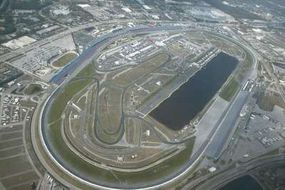
Gradually, paved tracks began replacing dirt tracks on the NASCAR circuit, and by the late 1960s, only three dirt tracks remained on the schedule. The last dirt-track race for NASCAR's top series was the Home State 200, held on September 30, 1970, at the one-mile State Fairgrounds Speedway in Raleigh, North Carolina. Winner Richard Petty said afterward, "I hope a few dirt tracks are kept on the schedule. This is where our brand of racing started." But it was not to be. The age of the superspeedway had arrived, and there was no looking back.
On the following pages, learn more about the NASCAR race tracks of today. View pictures of the tracks, and find out information you'll need to know when you attend a race, including location, what you can bring inside with you, and where to find parking.
For more information on all things NASCAR, see:
- NASCAR Home Page
- NASCAR Season Recaps
- NASCAR Tracks Quiz
- NASCAR Results
- NASCAR Drivers
- How NASCAR Race Cars Work
- How the Daytona 500 Works
Advertisement
